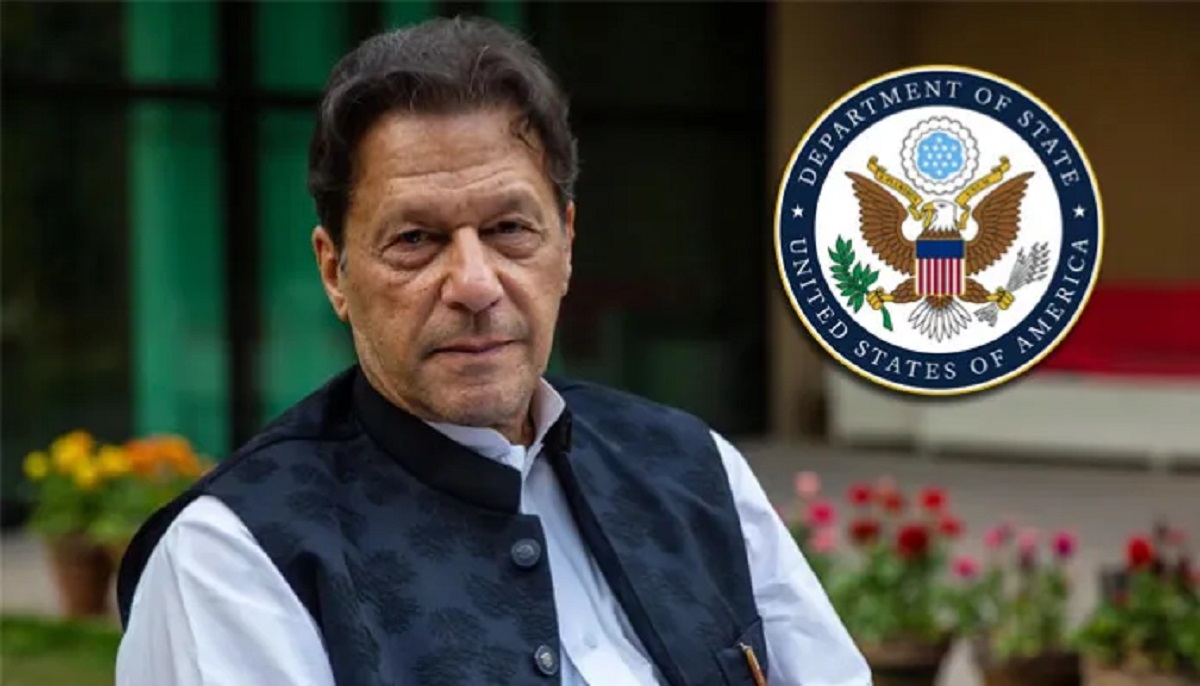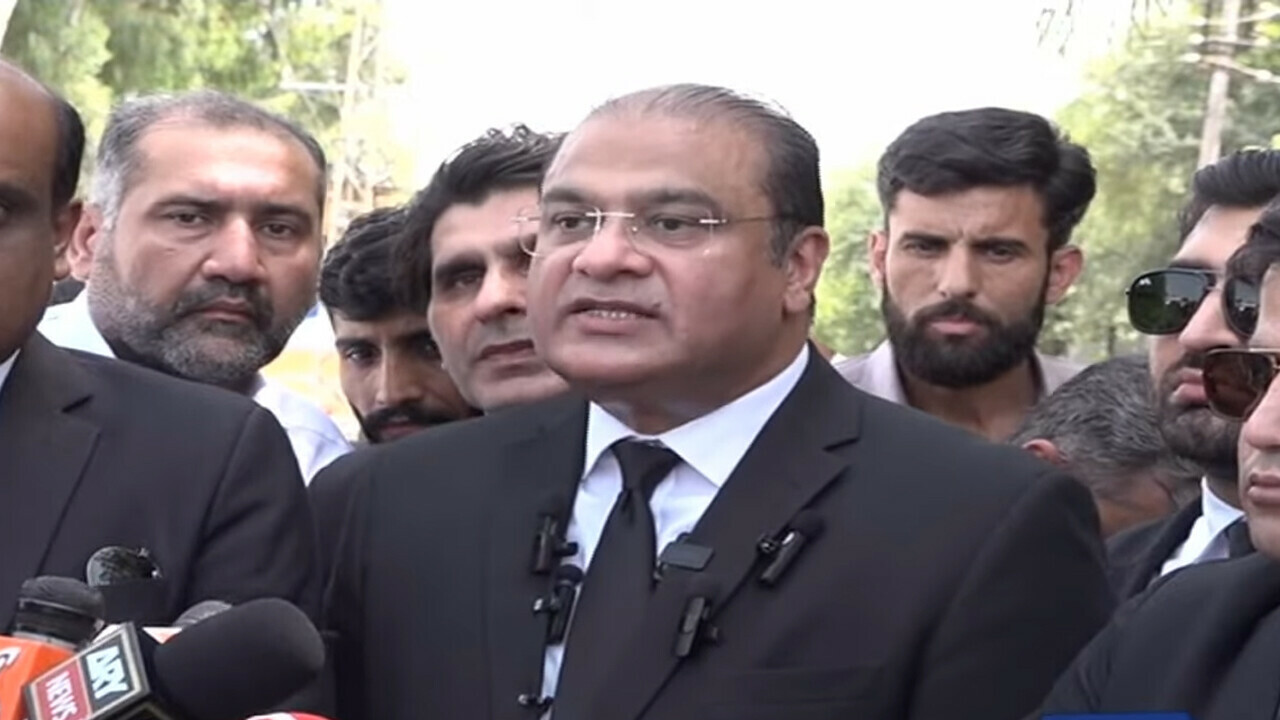News
Special Court Extends Imran Khan’s Judicial Remand In Cipher Case Until September 13
(CTN NEWS) – A recently established special court designated to handle cases arising from the Official Secrets Act has confirmed the extension of PTI Chairman Imran Khan‘s judicial remand until September 13, as confirmed by his legal representative on Wednesday.
This decision follows closely after the Islamabad High Court suspended the former prime minister’s three-year imprisonment sentence in the Toshakhana case, in which he had been convicted on August 5.
Notably, in response to the verdict suspension, the special court directed the authorities at Attock District Jail, where Imran Khan is presently detained, to maintain his custody within a “judicial lockup.” Subsequently, he was to be produced in connection with the cipher case.
The cipher case involves a diplomatic document that reportedly went missing from Imran Khan’s possession. The PTI alleges that this document contained a threat from the United States aimed at removing Imran from power.
In the same case, proceedings are also underway against Shah Mahmood Qureshi, PTI’s vice chairman and former foreign minister.

Legal Proceedings Unfold: Imran Khan’s Cipher Case and Judicial Remand Developments
In correspondence addressed to the superintendent of Attock jail, Special Court Judge Abual Hasnat Muhammad Zulqarnain conveyed that Imran Khan was to be subjected to “judicial remand in the aforementioned FIR case, and he is currently detained in district jail, Attock.”
The previous night, a notification from the law ministry disclosed that the interior ministry had raised “security concerns” in a letter and the Law and Justice Division did not object to holding Imran Khan’s cipher case trial at Attock jail.
Consequently, Judge Zulqarnain convened an in-camera hearing of the case at Attock jail, in the deputy superintendent’s office. Prior to the session, the police restricted the entry of the PTI’s legal team into the jail, allowing only one lawyer.
After the hearing, Imran Khan’s lawyer, Barrister Salman Safdar, asserted that the case against the PTI chairman under the Secrets Act lacked merit, and he intended to file a bail petition. He highlighted that the trial had yet to commence and that political motivations seemed evident.
Later on, the PTI’s legal team, including Safdar, Intizar Panjutha, Naeem Haider Panjutha, and Ali Ijaz Battar, were granted access to the jail.
During the court proceedings, Imran Khan appeared alongside the Federal Investigation Agency’s (FIA) team and the PTI’s legal representatives. Following the hearing’s conclusion, Judge Zulqarnain left the jail premises to return to Islamabad.
Previously, the special court had extended Qureshi’s remand by two days, which concluded on this day.
Subsequently, Barrister Safdar confirmed that the court had extended Imran Khan’s judicial remand by 14 days and had issued a notice regarding his post-arrest bail petition, requiring a response from the respondents by September 2.

Legal Maneuvers and Stance Unveiled: Imran Khan’s Cipher Case Developments
Safdar shared that Imran Khan was in high spirits and positive during their meeting, where the PTI chief detailed his stance on the cipher case for 15 minutes.
Highlighting the unusual nature of applying the Secrets Act to a former premier and a former foreign minister (Qureshi), Safdar criticized the prosecution.
He pointed out that neither the PTI’s legal team nor Imran himself were aware that he had been under judicial remand for the past 15 days in the cipher case, despite the FIA’s unsuccessful attempt for physical remand.
Barrister Safdar confirmed that the special court would hear the bail plea on Saturday. Furthermore, notices were issued to the FIA for two other petitions: one challenging the trial’s legitimacy and another requesting an open court hearing.
Regarding Imran’s stance on the cipher case, Safdar mentioned that former interior minister Rana Sanaullah had admitted on social media that they possessed the original cipher. Additionally, the FIA acknowledged that the original cipher document was held by the Foreign Office.
Safdar referred to meetings by the previous cabinet, asserting that the cipher’s contents were discussed there and that the government had declassified it. This raised questions about the purpose of the ongoing case, as the cipher was no longer classified after declassification.

Imran Khan’s “Cipher” Case: Allegations of Foreign Conspiracy and Political Impact
The “cypher” case revolves around a diplomatic cable that Imran Khan had presented as evidence supporting his claim that he was removed from power in April of the previous year due to a US-driven plot supported by the term “establishment,” often used to refer to Pakistan’s influential military.
Khan asserts that the cable substantiates his assertion that his ousting was orchestrated by the United States, which he alleges exerted pressure on Pakistan’s military to overthrow his government.
He links this pressure to his visit to Russia shortly before Russia’s invasion of Ukraine in February 2022.
Both the US and the Pakistani government and military have rejected Khan’s allegations.
Shah Mahmood Qureshi, the vice chairman of Khan’s Pakistan Tehreek-e-Insaf (PTI) party and a former foreign minister, has also been arrested in connection with the same case.
During the period of Khan’s incarceration this month, Pakistan’s parliament was dissolved at the request of his successor, Shehbaz Sharif. This led to the formation of an interim government to oversee fresh national elections.
However, the election date remains unannounced as the country’s election commission redraws constituencies based on the most recent census data.
Imran Khan, a former international cricket star and Pakistan’s most prominent political figure, has found himself entangled in over 100 legal cases, which he contends are orchestrated to hinder his chances of success in the upcoming elections.
Following Khan’s conviction and imprisonment on corruption charges, the election commission imposed a five-year ban on his participation in elections.
RELATED CTN NEWS:
Thai IPOs Face Postponements Amidst Economic Turbulence And Political Uncertainties
Meta Uncovers Massive ‘Spamouflage’ Influence Campaign Linked To Chinese Law Enforcement
[VIDEO] Live 3-Inch Worm Found In Australian Woman’s Brain Defies Medical Expectations

News
Google’s Search Dominance Is Unwinding, But Still Accounting 48% Search Revenue

Google is so closely associated with its key product that its name is a verb that signifies “search.” However, Google’s dominance in that sector is dwindling.
According to eMarketer, Google will lose control of the US search industry for the first time in decades next year.
Google will remain the dominant search player, accounting for 48% of American search advertising revenue. And, remarkably, Google is still increasing its sales in the field, despite being the dominating player in search since the early days of the George W. Bush administration. However, Amazon is growing at a quicker rate.
Google’s Search Dominance Is Unwinding
Amazon will hold over a quarter of US search ad dollars next year, rising to 27% by 2026, while Google will fall even more, according to eMarketer.
The Wall Street Journal was first to report on the forecast.
Lest you think you’ll have to switch to Bing or Yahoo, this isn’t the end of Google or anything really near.
Google is the fourth-most valued public firm in the world. Its market worth is $2.1 trillion, trailing just Apple, Microsoft, and the AI chip darling Nvidia. It also maintains its dominance in other industries, such as display advertisements, where it dominates alongside Facebook’s parent firm Meta, and video ads on YouTube.
To put those “other” firms in context, each is worth more than Delta Air Lines’ total market value. So, yeah, Google is not going anywhere.
Nonetheless, Google faces numerous dangers to its operations, particularly from antitrust regulators.
On Monday, a federal judge in San Francisco ruled that Google must open up its Google Play Store to competitors, dealing a significant blow to the firm in its long-running battle with Fortnite creator Epic Games. Google announced that it would appeal the verdict.
In August, a federal judge ruled that Google has an illegal monopoly on search. That verdict could lead to the dissolution of the company’s search operation. Another antitrust lawsuit filed last month accuses Google of abusing its dominance in the online advertising business.
Meanwhile, European regulators have compelled Google to follow tough new standards, which have resulted in multiple $1 billion-plus fines.

Pixa Bay
Google’s Search Dominance Is Unwinding
On top of that, the marketplace is becoming more difficult on its own.
TikTok, the fastest-growing social network, is expanding into the search market. And Amazon has accomplished something few other digital titans have done to date: it has established a habit.
When you want to buy anything, you usually go to Amazon, not Google. Amazon then buys adverts to push companies’ products to the top of your search results, increasing sales and earning Amazon a greater portion of the revenue. According to eMarketer, it is expected to generate $27.8 billion in search revenue in the United States next year, trailing only Google’s $62.9 billion total.
And then there’s AI, the technology that (supposedly) will change everything.
Why search in stilted language for “kendall jenner why bad bunny breakup” or “police moving violation driver rights no stop sign” when you can just ask OpenAI’s ChatGPT, “What’s going on with Kendall Jenner and Bad Bunny?” in “I need help fighting a moving violation involving a stop sign that wasn’t visible.” Google is working on exactly this technology with its Gemini product, but its success is far from guaranteed, especially with Apple collaborating with OpenAI and other businesses rapidly joining the market.
A Google spokeswoman referred to a blog post from last week in which the company unveiled ads in its AI overviews (the AI-generated text that appears at the top of search results). It’s Google’s way of expressing its ability to profit on a changing marketplace while retaining its business, even as its consumers steadily transition to ask-and-answer AI and away from search.

Google has long used a single catchphrase to defend itself against opponents who claim it is a monopoly abusing its power: competition is only a click away. Until recently, that seemed comically obtuse. Really? We are going to switch to Bing? Or Duck Duck Go? Give me a break.
But today, it feels more like reality.
Google is in no danger of disappearing. However, every highly dominating company faces some type of reckoning over time. GE, a Dow mainstay for more than a century, was broken up last year and is now a shell of its previous dominance. Sears declared bankruptcy in 2022 and is virtually out of business. US Steel, long the foundation of American manufacturing, is attempting to sell itself to a Japanese corporation.
SOURCE | CNN
News
2024 | Supreme Court Won’t Hear Appeal From Elon Musk’s X Platform Over Warrant In Trump Case

Washington — Trump Media, The Supreme Court announced Monday that it will not hear an appeal from social media platform X about a search warrant acquired by prosecutors in the election meddling case against former President Donald Trump.
The justices did not explain their rationale, and there were no recorded dissents.
The firm, which was known as Twitter before being purchased by billionaire Elon Musk, claims a nondisclosure order that prevented it from informing Trump about the warrant obtained by special counsel Jack Smith’s team violated its First Amendment rights.
The business also claims Trump should have had an opportunity to exercise executive privilege. If not reined in, the government may employ similar tactics to intercept additional privileged communications, their lawyers contended.
Supreme Court Won’t Hear Appeal From Elon Musk’s X Platform Over Warrant In Trump Case
Two neutral electronic privacy groups also joined in, urging the high court to hear the case on First Amendment grounds.
Prosecutors, however, claim that the corporation never shown that Trump utilized the account for official purposes, therefore executive privilege is not a problem. A lower court also determined that informing Trump could have compromised the current probe.

Trump utilized his Twitter account in the weeks preceding up to his supporters’ attack on the Capitol on January 6, 2021, to spread false assertions about the election, which prosecutors claim were intended to create doubt in the democratic process.
The indictment describes how Trump used his Twitter account to encourage his followers to travel to Washington on Jan. 6, pressuring Vice President Mike Pence to reject the certification, and falsely claiming that the Capitol crowd, which battered police officers and destroyed glass, was peaceful.
Supreme Court Won’t Hear Appeal From Elon Musk’s X Platform Over Warrant In Trump Case
That case is now moving forward following the Supreme Court’s verdict in July, which granted Trump full immunity from criminal prosecution as a former president.
The warrant arrived at Twitter amid quick changes implemented by Musk, who bought the company in 2022 and has since cut off most of its workforce, including those dedicated to combating disinformation and hate speech.
SOURCE | AP
News
The Supreme Court Turns Down Biden’s Government Appeal in a Texas Emergency Abortion Matter.

(VOR News) – A ruling that prohibits emergency abortions that contravene the Supreme Court law in the state of Texas, which has one of the most stringent abortion restrictions in the country, has been upheld by the Supreme Court of the United States. The United States Supreme Court upheld this decision.
The justices did not provide any specifics regarding the underlying reasons for their decision to uphold an order from a lower court that declared hospitals cannot be legally obligated to administer abortions if doing so would violate the law in the state of Texas.
Institutions are not required to perform abortions, as stipulated in the decree. The common populace did not investigate any opposing viewpoints. The decision was made just weeks before a presidential election that brought abortion to the forefront of the political agenda.
This decision follows the 2022 Supreme Court ruling that ended abortion nationwide.
In response to a request from the administration of Vice President Joe Biden to overturn the lower court’s decision, the justices expressed their disapproval.
The government contends that hospitals are obligated to perform abortions in compliance with federal legislation when the health or life of an expectant patient is in an exceedingly precarious condition.
This is the case in regions where the procedure is prohibited. The difficulty hospitals in Texas and other states are experiencing in determining whether or not routine care could be in violation of stringent state laws that prohibit abortion has resulted in an increase in the number of complaints concerning pregnant women who are experiencing medical distress being turned away from emergency rooms.
The administration cited the Supreme Court’s ruling in a case that bore a striking resemblance to the one that was presented to it in Idaho at the beginning of the year. The justices took a limited decision in that case to allow the continuation of emergency abortions without interruption while a lawsuit was still being heard.
In contrast, Texas has been a vocal proponent of the injunction’s continued enforcement. Texas has argued that its circumstances are distinct from those of Idaho, as the state does have an exemption for situations that pose a significant hazard to the health of an expectant patient.
According to the state, the discrepancy is the result of this exemption. The state of Idaho had a provision that safeguarded a woman’s life when the issue was first broached; however, it did not include protection for her health.
Certified medical practitioners are not obligated to wait until a woman’s life is in imminent peril before they are legally permitted to perform an abortion, as determined by the state supreme court.
The state of Texas highlighted this to the Supreme Court.
Nevertheless, medical professionals have criticized the Texas statute as being perilously ambiguous, and a medical board has declined to provide a list of all the disorders that are eligible for an exception. Furthermore, the statute has been criticized for its hazardous ambiguity.
For an extended period, termination of pregnancies has been a standard procedure in medical treatment for individuals who have been experiencing significant issues. It is implemented in this manner to prevent catastrophic outcomes, such as sepsis, organ failure, and other severe scenarios.
Nevertheless, medical professionals and hospitals in Texas and other states with strict abortion laws have noted that it is uncertain whether or not these terminations could be in violation of abortion prohibitions that include the possibility of a prison sentence. This is the case in regions where abortion prohibitions are exceedingly restrictive.
Following the Supreme Court’s decision to overturn Roe v. Wade, which resulted in restrictions on the rights of women to have abortions in several Republican-ruled states, the Texas case was revisited in 2022.
As per the orders that were disclosed by the administration of Vice President Joe Biden, hospitals are still required to provide abortions in cases that are classified as dire emergency.
As stipulated in a piece of health care legislation, the majority of hospitals are obligated to provide medical assistance to patients who are experiencing medical distress. This is in accordance with the law.
The state of Texas maintained that hospitals should not be obligated to provide abortions throughout the litigation, as doing so would violate the state’s constitutional prohibition on abortions. In its January judgment, the 5th United States Circuit Court of Appeals concurred with the state and acknowledged that the administration had exceeded its authority.
SOURCE: AP
SEE ALSO:
Could Last-Minute Surprises Derail Kamala Harris’ Campaign? “Nostradamus” Explains the US Poll.
-

 News4 years ago
News4 years agoLet’s Know About Ultra High Net Worth Individual
-
Entertainment2 years ago
Mabelle Prior: The Voice of Hope, Resilience, and Diversity Inspiring Generations
-
News11 years ago
Enviromental Groups Tell Mekong Leaders Lao Dam Evaluation Process Flawed
-

 Health4 years ago
Health4 years agoHow Much Ivermectin Should You Take?
-

 Tech3 years ago
Tech3 years agoTop Forex Brokers of 2023: Reviews and Analysis for Successful Trading
-

 Lifestyles3 years ago
Lifestyles3 years agoAries Soulmate Signs
-

 Entertainment3 years ago
Entertainment3 years agoWhat Should I Do If Disney Plus Keeps Logging Me Out of TV?
-

 Health3 years ago
Health3 years agoCan I Buy Ivermectin Without A Prescription in the USA?


